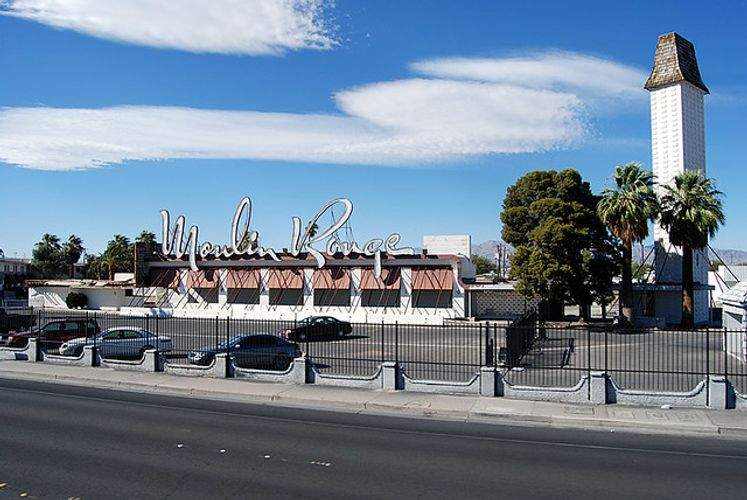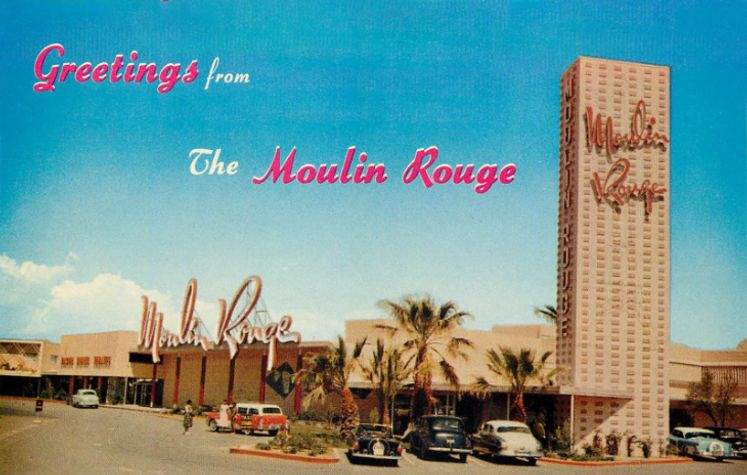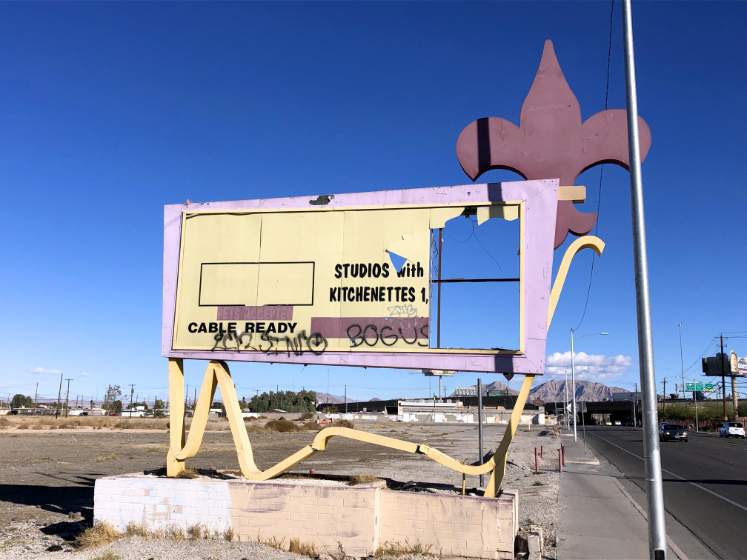
Moulin Rouge

"Moulin Rouge Casino" by Roadsidepictures is licensed under CC BY-NC 2.0.


Meeting at the Moulin Rouge Hotel coffee shop to end segregation on the Las Vegas Strip: photographic print. Marie and James B. McMillan Photograph Collection (PH-00334). UNLV Libraries Special Collections & Archives.

This sign is the only remaining structure that currently exists on the former Moulin Rouge site.
"The first integrated hotel and casino in Las Vegas, the Moulin Rouge opened in May 1955. It is celebrated as a landmark of racial integration in Las Vegas and the United States.
Entertainers from the Las Vegas Strip and Hollywood flocked to its showroom and casino, where celebrities and patrons, black and white, mingled freely – an electrifying experience in segregated Las Vegas. Boxing champ Joe Louis, part owner of the hotel and official greeter, welcomed crowds of gamblers, performers, visitors and locals to the color blind entertainment venue. The Moulin Rouge successfully challenged the long standing segregation practices of the Las Vegas hotel casino industry.
Despite its popularity, the Moulin Rouge closed in October 1955. Although there are several theories about the reasons for its closure, the truth remains a mystery. In 1960, it again played a major role in the community's slow progress towards integration when civic leaders and NAACP officials met at "the Rouge" and informally agreed to desegregate Las Vegas hotels. During the last 50 years, many people have attempted to re–open the fabled resort. Originally built by white investors, the property passed into black ownership in 1989. An arson fire on May 29, 2003, burned the original casino floor and showroom. Fortunately, the hotel, commercial area and neon sign were saved. This iconic sign was designed by Betty Willis, the creator of the famous "Welcome to Las Vegas" sign at the south end of the Strip."
(Las Vegas Pioneer Trail Marker 5)
Moulin Rouge opened on May 24, 1955.
Closed in October 1955.
Demolished in 2010.
Architecture: "Googie-populuxe" Modernist; Zick & Sharp.
Listed on the National Register of Historic Places in 1992.
Listed on the City of Las Vegas Historic Property Register in 1992.
Was located at 900 West Bonanza Road, Las Vegas, Nevada.